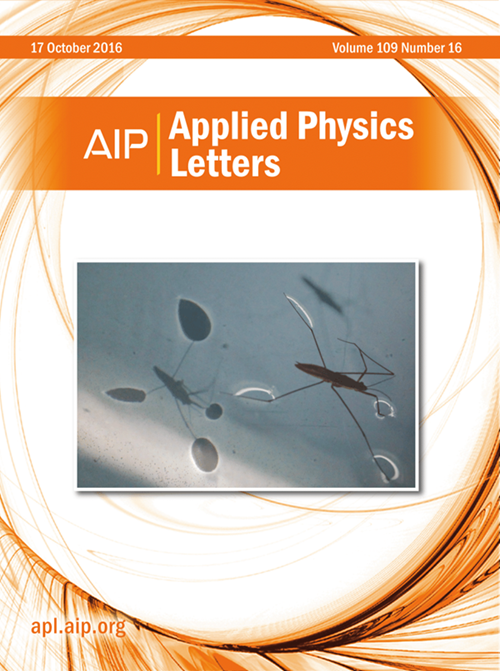外延Al/Si异质结构中氢插入抑制界面热输运
IF 3.5
2区 物理与天体物理
Q2 PHYSICS, APPLIED
引用次数: 0
摘要
界面热输运工程对于电子器件的高效热电转换和冷却至关重要。在这里,我们在一系列通过分子束外延生长的铝/硅异质结构中获得了非常高的界面热导率,在室温下高达0.49 GW m−2 K−1,比目前的值高出约29%。原子分辨率透射电子显微镜证实,原始界面接近完美,没有任何明显缺陷。密度泛函理论计算揭示了界面上Al和Si之间可能的共价键。有趣的是,通过在界面处插入单层氢原子,电导率可以降低~ 47%。分子动力学模拟表明,在2 ~ 7太赫兹的频率范围内,声子传输主要受到抑制。我们的工作强调了在原子尺度上操纵界面热传输的潜力,并可能促进热管理和能量收集方面的各种应用。本文章由计算机程序翻译,如有差异,请以英文原文为准。
Interfacial thermal transport suppression by hydrogen insertion in an epitaxial Al/Si heterostructure
Engineering of interfacial thermal transport is crucial for efficient heat-to-electricity conversion and cooling of electronic devices. Here, we achieve remarkably high interfacial thermal conductance in a series of aluminum/silicon heterostructures grown by molecular beam epitaxy, up to 0.49 GW m−2 K−1 at room temperature, which is ∼29% greater than state-of-the-art values. The pristine interface is near perfect without any notable defects, as confirmed by atomic-resolution transmission electron microscopy. Density functional theory calculations reveal the possible covalent bonding between Al and Si at the interface. Intriguingly, by inserting a monolayer of hydrogen atoms at the interface, the conductance can be reduced by ∼47%. Molecular dynamics simulations show that phonon transmission is primarily suppressed within the frequency range from 2 to 7 THz. Our work highlights the potential of manipulating interfacial thermal transport at the atomic scale and may facilitate diverse applications in thermal management and energy harvesting.
求助全文
通过发布文献求助,成功后即可免费获取论文全文。
去求助
来源期刊

Applied Physics Letters
物理-物理:应用
CiteScore
6.40
自引率
10.00%
发文量
1821
审稿时长
1.6 months
期刊介绍:
Applied Physics Letters (APL) features concise, up-to-date reports on significant new findings in applied physics. Emphasizing rapid dissemination of key data and new physical insights, APL offers prompt publication of new experimental and theoretical papers reporting applications of physics phenomena to all branches of science, engineering, and modern technology.
In addition to regular articles, the journal also publishes invited Fast Track, Perspectives, and in-depth Editorials which report on cutting-edge areas in applied physics.
APL Perspectives are forward-looking invited letters which highlight recent developments or discoveries. Emphasis is placed on very recent developments, potentially disruptive technologies, open questions and possible solutions. They also include a mini-roadmap detailing where the community should direct efforts in order for the phenomena to be viable for application and the challenges associated with meeting that performance threshold. Perspectives are characterized by personal viewpoints and opinions of recognized experts in the field.
Fast Track articles are invited original research articles that report results that are particularly novel and important or provide a significant advancement in an emerging field. Because of the urgency and scientific importance of the work, the peer review process is accelerated. If, during the review process, it becomes apparent that the paper does not meet the Fast Track criterion, it is returned to a normal track.
 求助内容:
求助内容: 应助结果提醒方式:
应助结果提醒方式:


